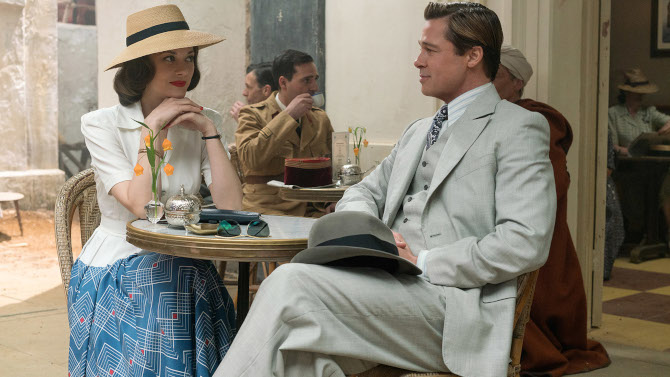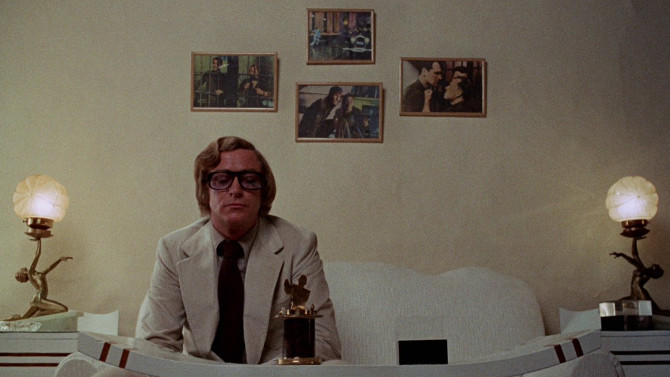
Déjà vu Dalliance
Channeling the mesmeric movies churned out by the studio system back in the 1930s and 40s, Allied (2016), directed by Robert Zemeckis, channels the likes of Morocco, Casablanca, Across the Pacific, Gilda, To Have and Have Not, and numerous others – attempting to find a spark from the classic themes of melodrama, romance, suspense and the epic nature of the annals of the cinematic past, with quite successful results. Set the year Casablanca and Across the Pacific were released – 1942, the story in fact starts in Morocco, with recently parachuted in Canadian spy Max Vatan (Brad Pitt) meeting up with another undercover agent, Marianne Beauséjour (Marion Cotillard), who will be pretending to be his wife.
-
Sci-Fi to the Core
 The AdeptFTLSeptember 10, 2019
The AdeptFTLSeptember 10, 2019A double feature that will only run you twenty-four minutes, writer/director Adam Stern (a visual effects guru, whose production house Artifex Studios has worked on everything from Mission to Mars and The Core, to television series, including Continuum and Wayward Pines) has developed two intriguing short sci-fi films that deal, in different ways, with discovering the unknown (and how very dangerous that can be). Feeling a little bit like entering the Twilight Zone, 2015's The Adept follows scientist couple Ben (Adam Greyson Reid) and Maddy (Jennifer Spence) as they ruminate on their most recent theoretical physics project. Before going to do the dishes, Ben wants to show Maddy his newest card trick. . . not overly interested, she continues to discuss their work. As they spitfire ideas off of each other, the multitasking Ben mysteriously makes the cards disappear – where to? – not even he is sure.
-

Birthday Blowout
Happy Birthday to MeAugust 6, 2019Ah, the birthday – a time for family, friends, presents and cake. . . but what if no one was to show up to that party? Could the effects of such a frightful occurrence have repercussions on a young child’s psyche? The genesis event of the 1981 Canadian slasher film Happy Birthday to Me finds veteran director J. Lee Thompson (1962's Cape Fear) transporting the audience into a violent murder mystery with a twist. Straddling the line of a slasher film and an Italian giallo, the killer is no mindless harbinger of undefeatable evil seen in features like Halloween and Friday the 13th, rather a sometimes straight-razor-wielding killer dressed all in black except for their white running shoes – I know what you are probably thinking, what horrible fashion sense. Furthermore, those being killed recognize their murderer, adding another layer to the mystery.
-

Stranger Than Pulp… Fiction
PulpJuly 2, 2019Just a year after making one of the greatest crime pictures ever to come out of the United Kingdom – 1971's Get Carter, the film’s three Michaels, producer Michael Klinger, writer/director Mike Hodges, and star Michael Caine reunited for a rather eccentric mishmash of genres and ideas – Pulp. Bringing together an all-star team of creative minds, on top of the above mentioned Michaels, the film is edited by iconic director of five James Bond flicks John Glen (his first, 1981's For Your Eyes Only, his last, 1989's Licence to Kill), cinematographer Ousama Rawi (perhaps best known for his excellent television work on shows like The Tudors and Borgia), while the music was composed by famed Beatles’ producer George Martin (often nicknamed the fifth Beatle).
-

Control Freak
They LiveJune 30, 2019Let’s face it, some movies don’t age too well, but if they’ve got the three main ingredients – solid writing, visuals, and acting, usually they can stand the test of time. One film that is still as timely today as it was back in 1988 is John Carpenter’s horror tinged sci-fi action film They Live. Welcome to Reagan era America, all trickle down economics, high unemployment rates and rising poverty. Set in ‘any city’ USA, Nada (Roddy Piper) is an out of work drifter looking for a semblance of the American dream. . . a job would be a start. Finally finding some employ on a construction site, fellow hard worker Frank (Keith David) takes him to a sort of shantytown, where the long travelling man can find a warm meal and a night’s rest.
-

Spinning Your Wheels
Red, White & WastedJune 16, 2019To be completely honest, when a producer acquaintance of mine, Noah Lang, who I met at the St. Lawrence International Film Festival several years ago, contacted me and was wondering if I would watch a documentary he was producing on ‘mudding’, I was wholly unaware of the term. Defined in the Urban Dictionary, “To go out in the mud in the back of a truck or jeep or other 4x4 vehicle and spin in the mud until all occupants are covered in mud”, directors Andrei Bowden-Schwartz and Sam B. Jones focus this topic on a family living in Orlando, Florida.
-

Across the Fence
The Boy in the Striped PyjamasJune 12, 2019An effective method of telling a dark story is often through the eyes of a child. . . and there is arguably no darker event in human history than the Holocaust. Earning praise from audiences worldwide and criticism by academics who lament its inaccuracies, The Boy in the Striped Pyjamas (2008), directed by Mark Herman (who also adapted the story for the screen, based upon John Boyne’s novel of the same name), is an emotional, poignant depiction of one of the most horrific blemishes of our collective past. Bruno (Asa Butterfield) is an eight year old boy living in Berlin. With a father (David Thewlis) moving up in the military, a supportive mother (Vera Farmiga), and an older sister, Gretel (Amber Beattie), they are leaving their life in the big city for a cold home in the rural unknown.

